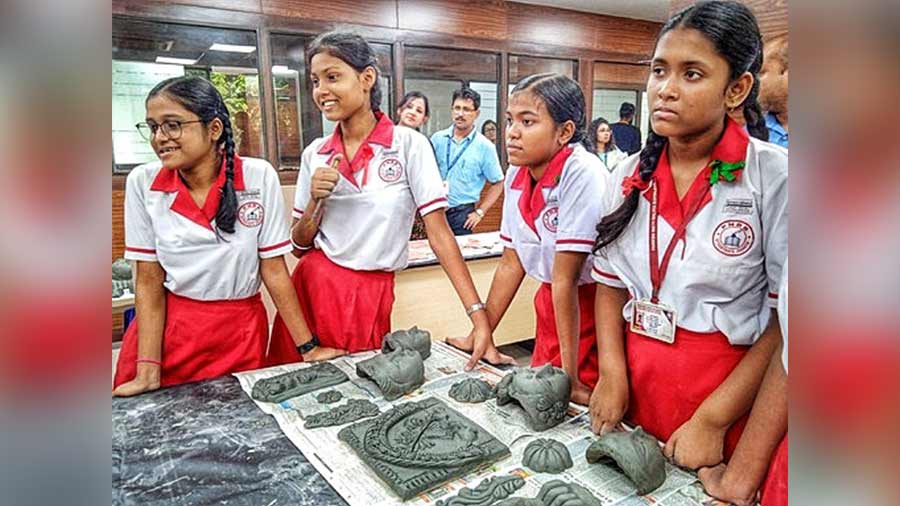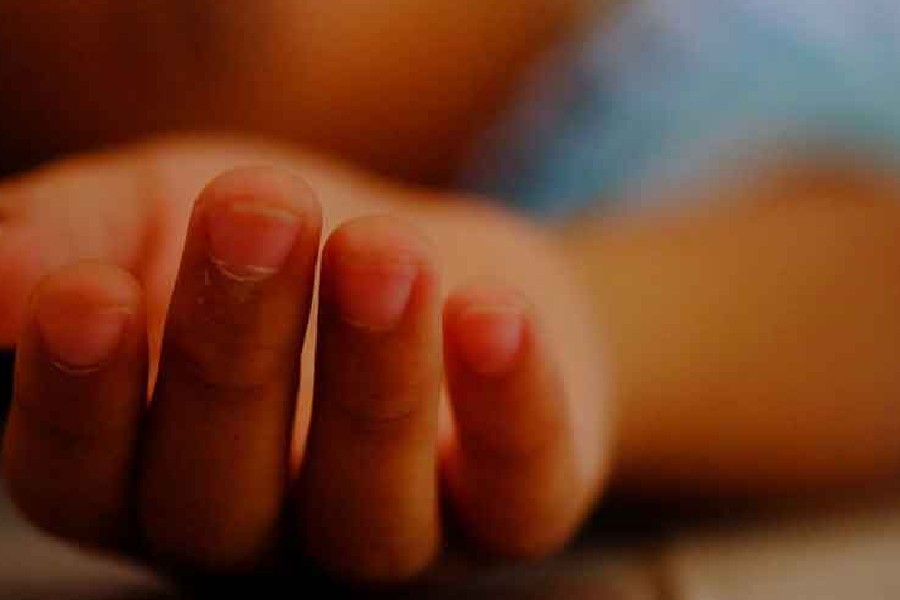The Pujas are still a week away, but the three-day pre-Puja tour — this year’s addition to the Calcutta Puja celebrations — has just gotten over. The Preview Show of Durga Puja Art showcased 26 Pujas.
Dhrubojyoti Bose Suvo, who is the force behind the NGO massArt and one of the organisers of the show, tells The Telegraph, “Unlike the Kochi Biennale or the Venice Biennale, the entire city turns into a public art gallery. But unlike the space in a gallery, which is a controlled environment, Durga Puja here is a largely uncontrolled space. Which is why the idea of a preview for Unesco representatives, diplomats, foreign art critics and so on.” He adds, “We also did an exhibition at the Town Hall to showcase how artisans work on idols.”
Art historian and lead researcher of Calcutta’s Jadunath Bhaban Museum and Research Centre, Tapati Guha Thakurata, who prepared the dossier sent to Unesco seeking inscription, says, “Though the inscription recognises that Durga Puja is celebrated beyond Calcutta in India and by the diaspora, it was the regional specificity that was stressed. Theme Pujas or the Pujas as public art demarcate the Pujas of Calcutta from the Pujas elsewhere.”
The Unesco decision reads thus: “Durga Puja is seen as the best instance of the public performance of religion and art, and as a thriving ground for collaborative artists and designers. The festival is characterised by large-scale installations and pavilions in urban areas, as well as by traditional Bengali drumming and veneration of the goddess. During the event, the divides of class, religion and ethnicities collapse as crowds of spectators walk around to admire the installations.”
But since when did the Calcutta Puja come to be this way?

Artist Asim Waqif had in his team an architect from Imphal, an electronics engineer from Delhi and one from Bengal’s Halishahar, a sound designer from Kumaon and an origami artiste from Hanoi. The idol was a paper idol made by Hoang Quyet, the origami artiste
In the 16th century, Durga was worshipped in spring. It became an autumnal festival a century later, an occasion to celebrate Rama’s victory over Ravana. Guha Thakurta calls this the “Sanskritisation of the ritual event”, something that corresponded with the increase in the political authority of Hindu land-owning magnates.
The Puja changed season and also space.
From the homes of zamindars to those of aristocrats to become a baroari affair — literally meaning a Puja started by 12 friends or associates — and thereafter, the all-inclusive sarbajanin puja.
By the time the Durga Puja rolled into the 21st century, it had become a heady thing — corporates worked on the branding, professional artists, architects and sound engineers worked on themes and artistic elements, and politicians lent their names and clout.
Take the case of the Arjunpur Amra Sabai Club in Baguiati, which is in its 49th year. It has been doing theme Pujas since 2012. In 2019, organiser Tamal Dutta’s brief to Delhi-based artist Asim Waqif was, “People should not want to leave the pandal and the pandal should be about sustainability.”
Waqif had in his team an architect from Imphal, an electronics engineer from Delhi and one from Bengal’s Halishahar, a sound designer from Kumaon and an origami artiste from Hanoi. The idol was a paper idol made by Hoang Quyet, the origami artiste.
This is the theme Puja, a synchronisation of idol, pandal, decorations, lighting and sound.
Prior to this, particularly in the 1970s and 80s, the Pujas followed the popular public culture of Bollywood. Durga’s face as fashioned by the artisans of Kumartuli often resembled Hema Malini or Sri Devi. The music would be popular soundtracks from that year’s box office hits. Competing Pujas in the neighbourhoods would produce a cacophony for residents.
“All that was cleaned up with the advent of the Asian Paints Sharad Shamman,” says Guha Thakurta.
That was 1985.
The international paints company that barely had a toehold in the eastern market in the 1980s made the Sharad Shamman award its marketing tool and how it succeeded! Today, there are probably as many awards as there are Puja pandals and Sharad Shamman remains quite the coveted thing.
The theme Puja as we know it was possibly born in the 2000s. A bunch of Government Art College graduates — Sanatan Dinda, Bhabotosh Sutar, Sushanta Pal — took over the Pujas. They married the modern philosophies of art and design and traditional idol-making with unfired alluvial clay, pandal construction with bamboo, ply planks and cloth cladding and electrical lighting decorations.
In 2001, Bosepukur Shitala Mandir put up a pandal decorated with earthen tea cups or bhnaars. Ten years later, Dinda won awards and accolades for his gravity-defying Durga idol — a hanging bronze-tinted fibreglass figure breaking out of a wall, suspended above a crouching asura. Dinda talked of “taking the help of magic realism to depict a floating figure in bronze”.
This year, Dinda, 51, had three big-budget Pujas to deliver. He had to finish them three days ahead of Mahalaya keeping in mind the preview show. He says, “The Unesco inscription will generate a divide between big budget-big name pujas and small budget ones. Durga Puja of Calcutta will totally go into the hands of corporates who will decide everything. It will not remain a festival any longer.” According to him, what the inscription should do is encourage the young and the new.
Sutar, 48, thinks the inscription will lead to a more evolved form of the theme Puja. He says, “Artists should peel away the ostentation and present their concept in a more original and pure form connecting the Durga Puja and the people in a very organic way.”
The international appreciation is what younger artists like Rintu Das — of the 2021 migrant workerthemed Barisha Club Puja — look forward to. “I have heard that in November there will be a show for us in London. I am really looking forward to it,” says Das.
In the meantime, you can hear the footsteps of guests. Joydeep Mukherjee, who is the founder of Meghdutam Travels, has been doing Puja tourism since 2012. He says, “Tourists from Portugal, France, Spain and Switzerland are coming this year, close to Mahalaya. I will take them to Kumartuli to give them a feel of the Pujas. I will also take them to see the immersion...”












